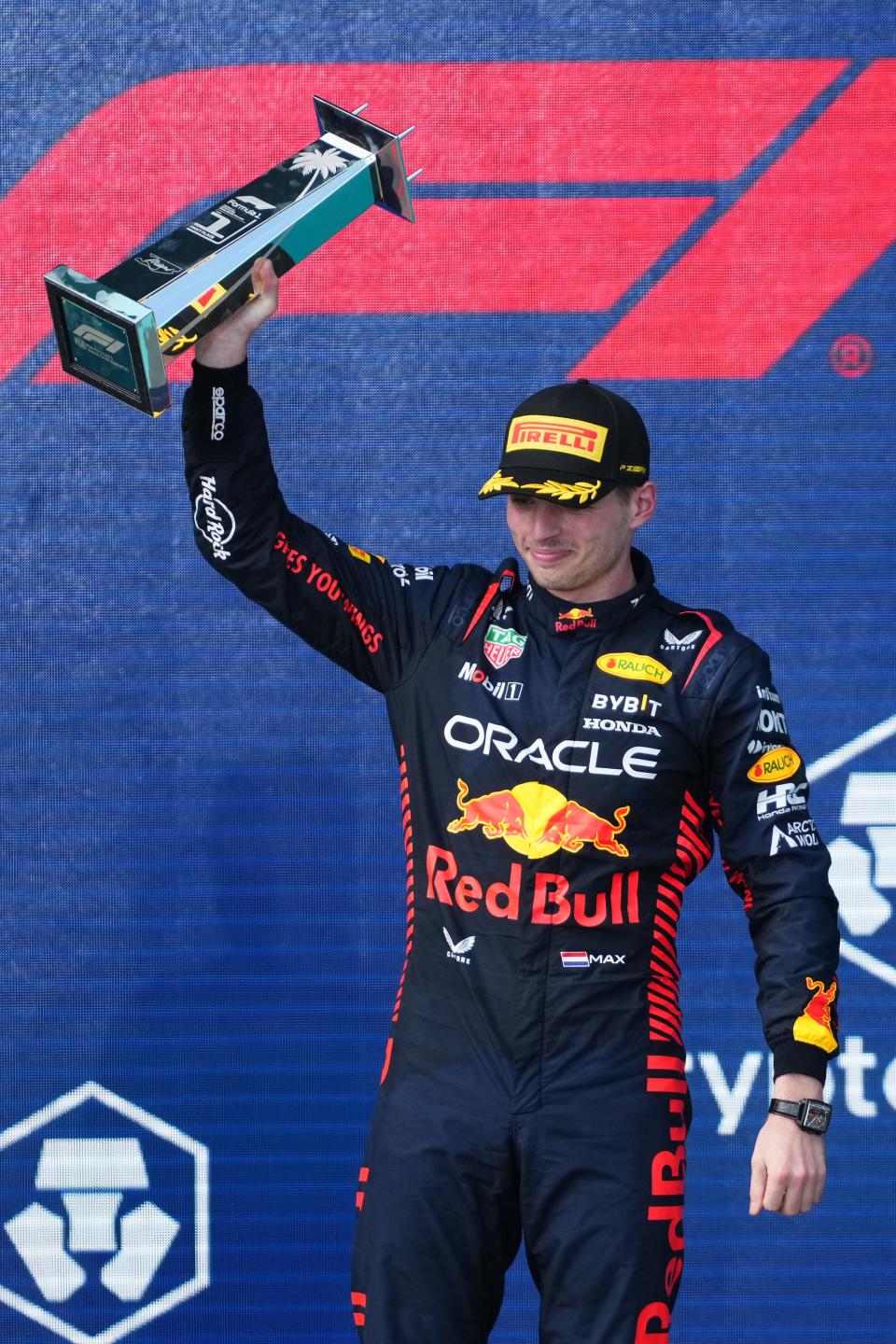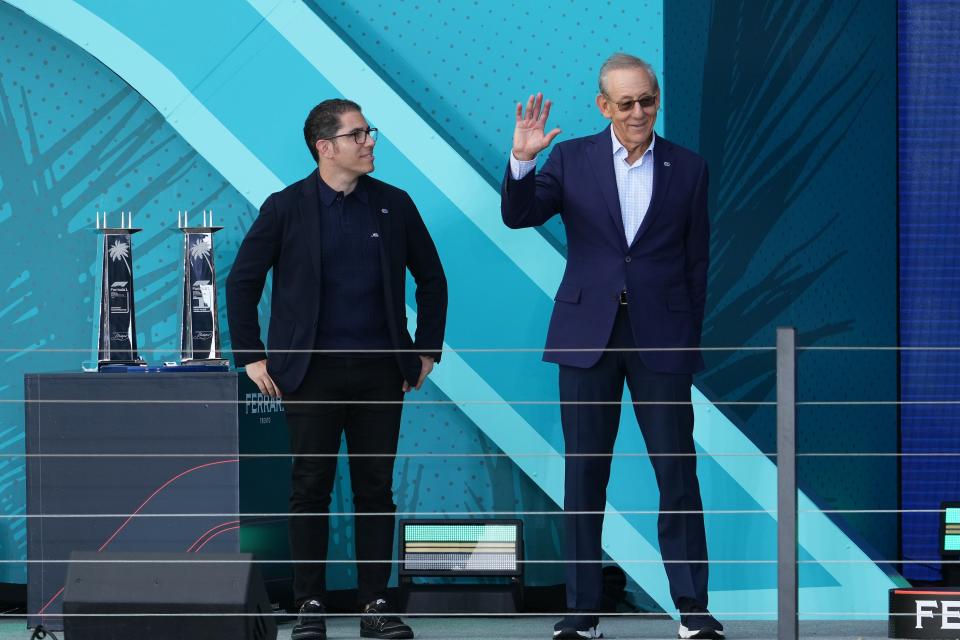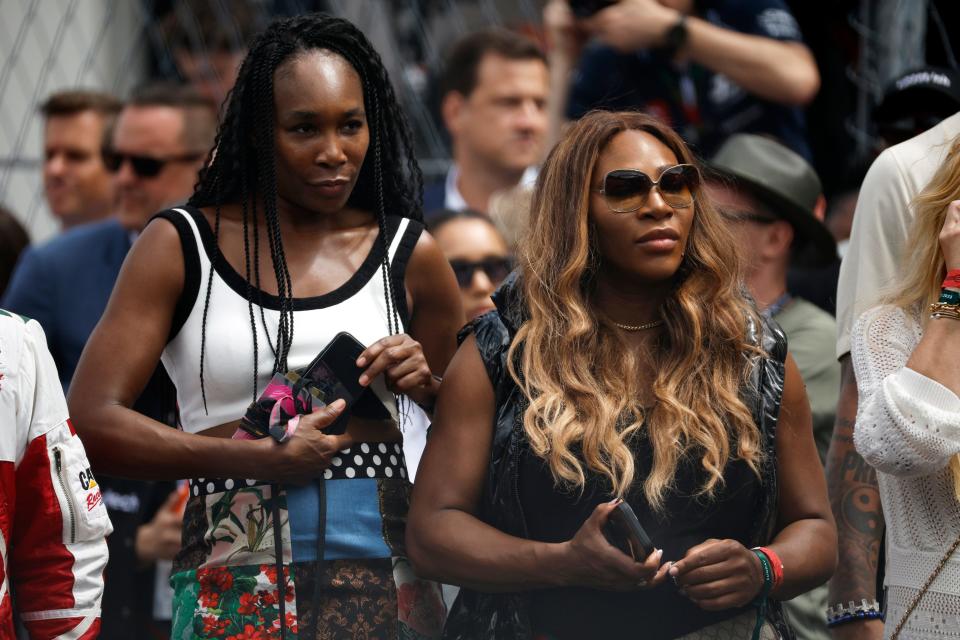Stephen Ross' ‘just go do it' edict green-lights second successful Miami Grand Prix | Habib

MIAMI GARDENS — Just go do it.
It sounds like the slogan for a sneaker company, but in this case, it’s the fuel that makes the Miami Grand Prix go. Tom Garfinkel, managing partner of the event, heard those words time and again from his boss, Dolphins owner Stephen Ross, which in turn green-lighted Garfinkel’s quest to make Sunday’s event what it turned out to be.
Max Verstappen won the race. At least that’s what the scoreboard said, but you could say the event itself won. Avoiding the terrible 2s, the Miami Grand Prix was sold out for the second consecutive year despite ticket prices that ranged from expensive to you-don’t-want-to-know.
With it came another notch in the belt in the Americanization of Formula One, which for years has been the rage in Europe but barely on the radar of most Americans. But in 2017, a U.S. entertainment conglomerate, Liberty Media, bought the circuit, announcing its intentions in typical, restrained American style: with boxing’s Michael Buffer bellowing his famous “Let’s get ready to rumble!” cry.
When Garfinkel isn’t wearing the hat of vice chairman, president and CEO of the Dolphins, he is and has been a longtime gearhead who spearheaded the outlandish idea of turning the team’s home of Hard Rock Stadium into a racing circuit.
That brings us to the present day. Seated on a couch in his luxurious box overlooking the start/finish line Sunday morning, Garfinkel explained how last year truly was a race — a sprint just to pull off this event using temporary structures surrounding the stadium. Now, everything is permanent.
“This year, it’s like, ‘OK, we want to try to be perfect. We’re not just trying to pull it off,’ ” Garfinkel said.
Miami Grand Prix: Red Bull's Perez takes the pole
Dolphins lineman Dan Feeney: Sure wish I could squeeze into F1 car for a spin
Logan Sargeant: From Miami Grand Prix spectator to only American driver in the race

That’s where Ross’ green cash meant green lights. Say what you want about Ross’ inability to win a Super Bowl with the Dolphins — and fans will — but no one could ever trace those shortcomings to a tight wallet. The reason F1 is held at the Dolphins’ home and not any other NFL stadium is simple.
“Most stadiums around the country are owned by a municipality of some sort,” Garfinkel said. “And that creates a lot of challenges to do what we did here. We can just go make an investment and do it. I talked to one person. He says, ‘Yeah, I believe in it. Let’s go do it.’ And then I say, ‘We need to spend more money than we originally anticipated. We want to make this best-in-class.’ And he said, ‘Just go do it.’ ”
Balancing hard-core, casual fans
That put Garfinkel on a balance beam of sorts. From Day 1, the Miami Grand Prix has never forgotten its first name — Miami — which is why there’s a swimming pool and yachts and salsa dancers and fashion shows at an F1 race. Good luck finding that in Bahrain or Monaco.
“They have a lot of celebrities here, generally,” said Logan Sargeant, the driver from Fort Lauderdale giving F1 its first American racer since 2015. “And yeah, I mean, even when you go around the track, there’s so many different sort of suites and villas and boxes or whatever you would call them compared to what we normally see in Europe.”
Garfinkel makes no attempt to mask this. His team’s studies show the demographics of the 90,000 attending Sunday represent the widest cross-section not only of this region but internationally. What’s the best way to make everybody happy? Offer everything.
“I think the hard-core races fans are taken care of because ultimately, the most important thing is the drivers, the cars, the competition on the track,” Garfinkel said. “ … You can create a great environment around that.”
As for the curiosity-seekers?
“You’re going to get the more casual race fans to come out and enjoy the food and the wine, the music and whatever else is going on,” Garfinkel said. “And then fall in love with the racing.”
Tyler Epp, president of South Florida Motorsports, is committed to making Miami’s race distinct for the duration of the 10-year contract with F1.
“We’re going to have the eyes of the world on us,” Epp said. “And we’re going to view that Formula One product with a Miami lens.”
Whether viewing from a Miami or U.S. perspective, Epp ends up with similar conclusions.
“We have to be careful with assuming that the U.S. race fan is one thing or the U.S. fan is one thing,” he said. “The U.S. market is made up of tens of millions of different types of people. And so they have to be catered to, and the products that we produce are for all those different types of people.”
Garfinkel couldn’t help but notice that during Saturday’s qualifying, the hard-cores exploded when Verstappen, the defending world champion, failed to land on Row 1, while the casual fans didn’t get what the buzz was about.
Not much drama ... until Sunday
Therein lies a problem for F1. Race week featured plenty of talk about the previous weekend’s race in Azerbaijan, which, in the words of one driver, was just as boring as everyone expected. Sergio Perez won that following a pass on Lap 10 of a 51-lap event, the equivalent of the Dolphins scoring the decisive touchdown midway through the first quarter.
That doesn’t take into account the bigger issue: The Azerbaijan race wasn’t an outlier. Entering Sunday’s race, F1 drivers had competed in four events covering 216 laps. The eventual winner has led all but 26 of them. In the time it takes to read this sentence, more vehicular drama is taking place on I-95. Further unrest can be traced to the reduction of the DRS zone in Miami. DRS is the drag reduction system, giving cars extra oomph for overtaking.
“A Formula One season is like a long book,” said Christian Horner, principal of Verstappen’s dominant Red Bull team. “Not every chapter can be a blockbuster.”
Thankfully, Sunday restored a sense of drama to the season, with Verstappen rallying after starting ninth.
Horner, for one, believes in the overall state of the series.
“Formula One has never been in a greater position,” he said. “I think Liberty Media has done a great job bringing in new demographics.”
Linking up with Netflix helped. That brought about the launch of “Drive to Survive,” following teams on and off the track and giving newbie fans a rooting interest. The spinoff of sorts is that Haas owner Guenther Steiner wrote “Surviving to Drive,” which sounds like any South Floridian’s lament but actually is the bestselling motorsports book three months before it’s even published.
Monday morning, the activity at Hard Rock Stadium will involve packing up and cleaning up with another year in the books. By the end of the year, Austin, Texas, and Las Vegas also will take their turns hosting the F1 traveling show, with the new Vegas race taking place at night on the Strip, no less.
You’d have to go back 41 years for the last time any country held three F1 events. Liberty Media’s message to the U.S., in other words, isn’t much different from Ross’ to Garfinkel.
Just go do it.
Sports reporter Hal Habib can be reached at hhabib@pbpost.com and followed on Twitter @gunnerhal.

This article originally appeared on Palm Beach Post: Stephen Ross fuels success behind second annual Miami Grand Prix

